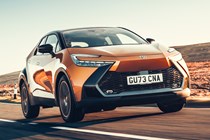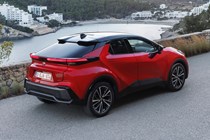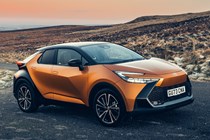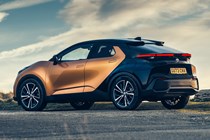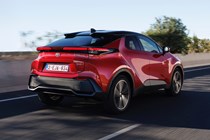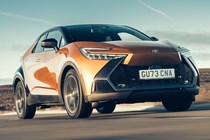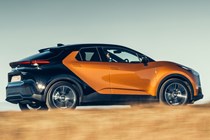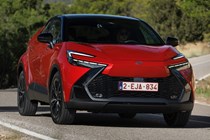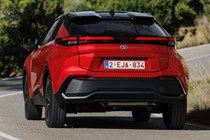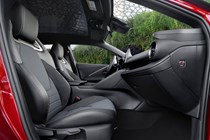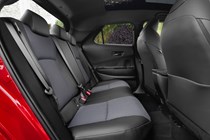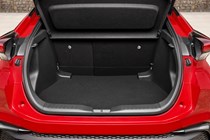Toyota C-HR engines, drive and performance
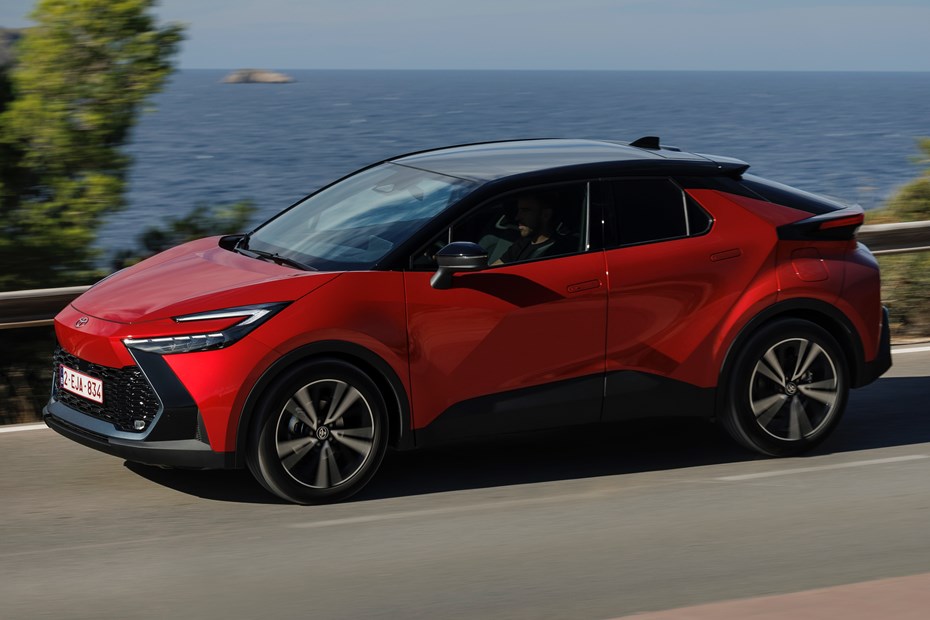
- Two self-charging hybrids – 1.8 and 2.0
- Single 2.0-litre PHEV with 223hp
- Responsive, but not exactly exciting
Hybrid engines
Performance for the 1.8-litre self-charging hybrid isn’t particularly sparkling. It takes a leisurely 10.2 seconds to get from 0–62mph so, while it’s not out of its depth on motorways, shorter slip roads won’t be fun. Driven sedately, it feels strong enough, with the electric motor helping it feel responsive on light throttle openings. It’s smoother than the old C-HR’s 1.8-litre engine, sounding less harsh and offering a more natural rise in revs as you accelerate.
The 2.0-litre self-charger is much peppier with an 8.1 second 0–62mph time. That said, it never feels especially fast, especially off the line. It’s a coarser engine than the 1.8 and is more liable to hold revs at a single uncomfortable point if you pin the throttle. However, as it’s that much more powerful, you don’t need to work the engine as hard in most scenarios.
The Toyota C-HR PHEV uses the same 2.0-litre four-cylinder petrol engine as the most powerful self-charging hybrid model. However, it’s teamed with a punchier electric motor and a much larger battery pack. The extra electrical assistance punts its output from 197hp to 223hp. You get a lot more torque, too.
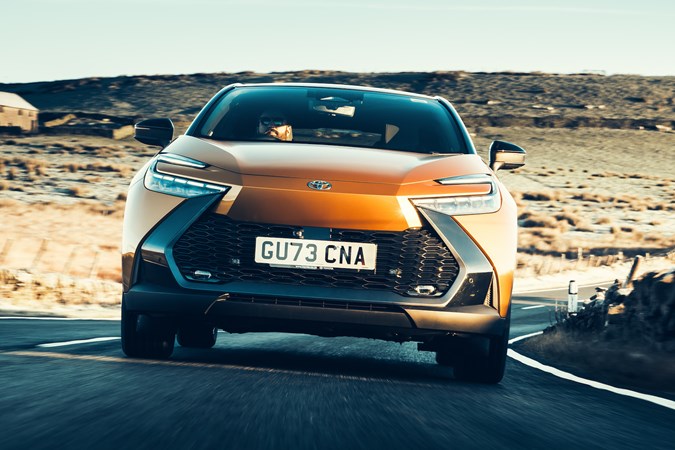
That has a profound effect on the way the C-HR accelerates. The PHEV can dispatch the 0–62mph sprint in 7.4 seconds, compared to 8.1 seconds for the 2.0-litre hybrid model and 10.2 seconds for the 1.8-litre hybrid model. Crucially, it’s a good two seconds quicker than the Kia Niro.
The C-HR is also a lot more flexible than its self-charging hybrid siblings. Because it has so much more torque, there’s no need to stamp on the accelerator when overtaking or joining motorway slip roads. You simply wiggle your big toe and let the grunt from the larger electric motor do most of the donkey work.
Obviously, this is better for fuel economy, but it’s also much better for refinement. Like the self-charging C-HRs, the PHEV’s petrol engine is yoked to a CVT. However, because you seldom need to use full throttle in the PHEV, the transmission rarely feels the urge to spike the engine revs to the redline. That means the PHEV’s cabin is far quieter.
What’s it like to drive?
- Accurate handling, decent steering
- Plug-in hybrid has less agile handling
- Good driver-assistance technology
The C-HR feels good enough on the road. It’s easy to string corners together, although do it too quickly and you’ll feel the body leaning from side to side. That makes its feel less agile than a Cupra Formentor. It’s also less neutral, as the C-HR runs wide at the front earlier.
The plug-in hybrid drives a little differently. Toyota had to make a few changes to the PHEV to control the added weight and performance of its faster plug-in hybrid powertrain. So, there are new dampers on the rear axle to compensate for the weight of the battery pack and larger 17-inch brakes to rein in the thundering performance of the additional horses storming around the engine bay.
The changes are very seamless, though. When you’re bumbling around town or cruising down the motorway, the only appreciable difference is how much quieter the interior is.
You can feel the weight of the battery pack when you’re pushing hard, though. The PHEV simply isn’t as nimble as the standard C-HR, and we found it suffers from a little more body roll. But that’s to be expected because it weighs an extra 200kg.
To try and minimise this effect, Toyota mounted the battery as low down and close to the centre of the car as possible. And it produced the right result. We couldn’t ever call it fun, but the C-HR PHEV is predictable and safe in the corners.
The C-HR’s steering has a little too much assistance and it’s incredibly numb. It’s direct enough, but it completely isolates you from the road. We can excuse that here, though, because the C-HR isn’t a car that was designed to appeal to keen drivers. Indeed, Toyota told us its primary foci for the C-HR were to make it look cool and sip fuel (both of which we think it’s achieved).
Thankfully, the C-HR never encourages you to drive quickly, so the numb steering is even less of a concern. It has an armoury of driver assistance technology, (such as lane-keeping assist and an automatic braking function that helps you maintain your distance from the car ahead), all of which is designed to bear as much of the driver’s cognitive load as possible.
And because Toyota’s tech works better than any of its Volkswagen Group rivals, it means you’re more likely to leave it on and enjoy an easier ride – especially when you’re on the motorway. Fitting the C-HR with the same racy steering rack as you get in, say, a GR Yaris would have ruined this experience.


